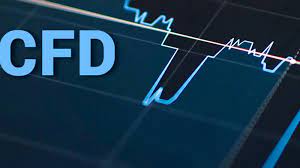CFD (Contract for Difference) trading is one of the most well-known forms of trading in the online financial market today. It is a popular way to enter and exit positions on various financial instruments, such as currencies, commodities, indices, and shares. CFD trading offers great opportunities for traders to capitalize on price fluctuations in the market, but it requires a full understanding of the basics to gain success.
This blog post will guide you through the basics of CFD trading, including the definition, mechanics, and advantages of CFDs, how to choose a broker, and the risks involved. It is essential to master these basics before starting CFD trading and make informed decisions to maximize your profits.
What is CFD trading?
CFD trading is a trading technique where traders speculate on the price movements of an underlying financial instrument. With CFD trading, traders don’t own the actual financial asset but only the contract that allows them to trade on the difference between the opening and closing price of that financial instrument. This form of trading allows traders to profit from both rising and falling markets, as they can ‘buy’ (go long) or ‘sell’ (go short) on the financial instruments, such as stocks, indices, or commodities.
The mechanics of CFD trading
When trading CFDs, traders need to choose a financial instrument to trade, and then open an account with a reputable broker. It is important to choose a broker that is regulated by a financial authority, such as the Financial Conduct Authority (FCA), to avoid scams or fraud.
Once you have opened an account, you can place a trade by selecting an asset, choosing your position, and entering the trade size. You can also use leverage (borrowed funds) to increase your exposure to the markets. However, it is risky to use leverage as it can magnify your potential gains and losses.
In CFD trading, you need to pay the broker a spread or commission when opening and closing trades. The spread is the difference between the buy and sell price of an asset, and usually varies according to the market liquidity.
The advantages of CFD trading
One of the biggest advantages of CFD trading is that it requires less capital than traditional trading methods. Traders can enter the market with a relatively small amount of money and still enjoy the benefits of trading. CFD trading also allows traders to take advantage of market volatility and flexibly trade in different markets.
Another advantage of CFD trading is that it is a highly accessible and straightforward form of trading. With the trading platforms available across various devices and interfaces, you can easily access CFD trading no matter where you are.
The risks of CFD trading
As with any form of trading, cfd trading comes with risks. One of the biggest risks is the use of leverage. You can easily lose more than your initial investment when trading with leverage. In addition, CFD trading involves high volatility, which can lead to unpredictable price movements. You need to be prepared to manage your risks effectively to prevent losing large amounts of money.
Conclusion:
CFD trading is an exciting and dynamic form of trading, but to succeed in it, traders need to understand the basics and be able to manage their risks effectively. This blog post has provided insight into the definition, mechanics, advantages, and risks of CFD trading. Always remember to choose a reputable broker and never invest more than you can afford to lose. With the right knowledge and skills, CFD trading can offer great opportunities for traders to earn profits.



